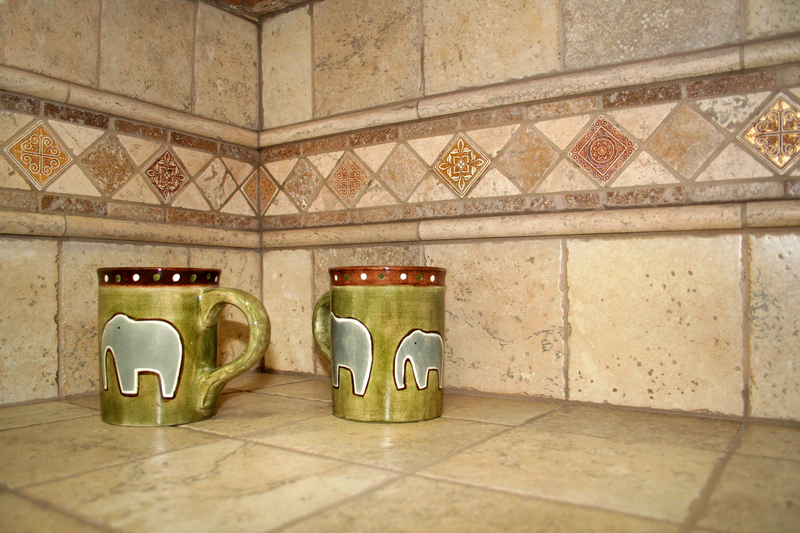Conquer Grease Challenges: Easy Steps for Enamel Oven Tray Care
Posted on 22/05/2025
Conquer Grease Challenges: Easy Steps for Enamel Oven Tray Care
Has the stubborn grease on your enamel oven tray been a source of frustration? Taking care of your enamel oven tray need not be a daunting task. By mastering a few simple techniques and understanding the right products to use, you can effectively conquer grease buildup and keep your enamel trays shining like new.
Maintaining a clean oven tray not only improves the taste and hygiene of your baked dishes, but it also extends the life of your kitchenware. In this comprehensive guide, we'll reveal the best, most practical steps for enamel oven tray care, ensuring you never have to deal with lasting stains or burnt-on grease again.
Why Proper Enamel Oven Tray Care Matters
Enamel oven trays are popular for their durability, even heat distribution, and sleek finish. However, if left unattended, they are prone to accumulating stubborn grease, grime, and burnt-on residues. Here are a few reasons why you should prioritize grease-free enamel oven trays:
- Prevents rust and long-term damage: Excessive grease can break down the enamel coating, leading to rust or chips.
- Enhances food flavour: Old grease residue can impart unpleasant tastes and odours to your dishes.
- Improves hygiene: Bacteria thrive on dirty surfaces, making regular cleaning a crucial part of food safety.
- Extends tray lifespan: Well-maintained enamel trays last longer and perform better.
Understanding Enamel Oven Trays
Before diving into oven tray cleaning techniques, it's important to recognize the benefits of enamel-coated trays:
- Non-reactive surface: Enamel is non-porous and does not react with acidic foods.
- Easy to clean surface: Unlike some metals, enamel resists sticking, making it reassuringly simple to clean--if done properly.
- Durability: With proper care, an enamel oven tray can be a long-lived staple of your kitchen.
Now, let's learn how to conquer grease challenges and keep your trays pristine.

Step-by-Step Guide: How to Clean Enamel Oven Trays Effortlessly
1. Immediate Rinse After Each Use
- Act Quickly: As soon as your tray has cooled down enough to handle, gently wipe away loose food debris with a soft spatula.
- Soak in Warm Water: Fill the tray with warm water and a couple of drops of mild dish detergent. Let it soak for 15-20 minutes to loosen any stuck-on grease.
Why immediate attention works: The longer grease and food residues sit, the more time they have to bond to the enamel. Early action prevents stubborn buildup.
2. The Key Ingredients for Safe, Effective Cleaning
- Baking soda & white vinegar: A gentle yet effective combination to break down stubborn stains and grease without scratching the enamel.
- Mild dishwashing detergent: Choose phosphate-free options for eco-friendly, safe cleaning.
- Soft sponge or microfiber cloth: Harsh scrubbers can scratch the enamel surface, so always opt for non-abrasive cleaning tools.
3. Deep Clean for Persistent Grease
If regular cleaning hasn't eliminated the greasy spots, it's time for a deeper clean:
- Sprinkle a generous layer of baking soda over the greasy areas of the enamel tray.
- Add a small amount of warm water to form a paste.
- Let the paste sit for 30-45 minutes (for extra-stubborn spots, allow overnight treatment).
- Spray or drizzle white vinegar over the baking soda paste to activate fizzing, which helps lift grease and burnt-on food.
- Gently scrub with a soft sponge in circular motions. Rinse thoroughly and dry using a lint-free towel.
4. Preventing Future Grease Build-Up
An ounce of prevention is worth a pound of cure!
- Line your oven tray: Use parchment paper or a silicone baking mat to reduce direct contact and make cleanup even easier.
- Learn your oven's hotspots: Some oven tray areas accumulate more grease. Pay special attention to these zones after cooking.
- Avoid cooking sprays with additives: Basic vegetable oil is often less likely to polymerize (form hard, sticky layers) than non-stick sprays with additives.
Oven Tray Grease Removal: What to Avoid
Don't Use Abrasive Tools
- Steel wool, scouring pads, and harsh cleaning powders are too abrasive for enamel surfaces and can cause scratches or chips.
Steer Clear of Strong Chemicals
- Oven cleaners, bleach, or ammonia can strip enamel of its protective coating and produce harmful fumes.
Avoid Sudden Temperature Changes
- Rapid cooling or heating can stress the enamel, making it more vulnerable to cracks and chips.
Natural and Eco-Friendly Solutions for Enamel Oven Tray Care
If you wish to use environmentally friendly solutions for enamel tray cleaning, here are some tried-and-tested household options:
- Lemon juice: Its natural acidity cuts grease, and it leaves a fresh scent.
- Baking powder paste: Similar to baking soda, baking powder is mildly abrasive and good for light scouring.
- Castile soap: A gentle, natural soap that cleans effectively without harsh chemicals.
Tips to Keep Your Enamel Oven Tray Spotless
- Establish a routine: Make it a habit to wipe down your tray after each use.
- Spot treat spills quickly: Take care of spills and splatters right away to prevent them from baking on.
- Avoid overcrowding: If your trays are overloaded with food, grease can splatter and bake on more easily.
- Rotate trays during baking: This ensures even exposure and reduces the risk of burnt-on spots.
Common Myths About Enamel Oven Tray Cleaning
- Myth: "Strong chemicals make trays cleaner." - In reality, harsh chemicals can degrade the enamel over time. Gentle methods are equally, if not more, effective in the long run.
- Myth: "Scratching won't matter if it's inside." - Even small scratches risk exposing the underlying metal, leading to rust and stains.
- Myth: "Dishwasher is always safe for enamel trays." - While many are dishwasher safe, frequent dishwashing at high temperatures can cause surface wear. Check your manufacturer's advice first.

Frequently Asked Questions About Enamel Oven Tray Care
1. How do I remove baked-on grease from an enamel oven tray?
Answer: Soak the tray in hot water and dish soap for at least 20 minutes. For stubborn spots, apply a baking soda and vinegar paste, allow it to fizz and sit, then remove gently with a soft sponge.
2. Are all enamel oven trays dishwasher safe?
Answer: Most are, but frequent washing can dull their shine if the dishwasher uses harsh detergents or very high heat. Always check the care instructions specific to your product.
3. How do I stop my tray from staining?
Answer: Use liners, clean promptly after each use, and avoid cooking highly pigmented or acidic foods directly on the tray surface where possible.
4. What should I do if the enamel chips?
Answer: If your tray has extensive chips or cracks, it's safest to replace it, as the exposed metal underneath is more prone to rust and may release substances during cooking.
Summary: Your Action Plan for Grease-Free Enamel Oven Trays
- Act quickly after each use to prevent grease and food from bonding to the enamel.
- Use gentle, natural ingredients such as baking soda and vinegar for tough stains, and always avoid abrasive tools.
- Develop a cleaning routine to keep trays spotless and prolong their lifespan.
- Choose prevention methods like tray liners and careful food placement to minimize messes.
- Refer to manufacturer instructions for washing, and replace trays with damaged enamel to ensure kitchen safety.
Final Thoughts
Conquering grease challenges on your enamel oven trays is not only easier than you think, but also surprisingly rewarding. By following these simple, effective care steps, you will enjoy spotless, hygienic oven trays and perfectly cooked meals every time. Make these tips a part of your kitchen routine, and you'll never have to dread cleaning your enamel oven trays again!
Ready to put these strategies to the test? Share your own enamel oven tray care tips or any questions in the comments below!




